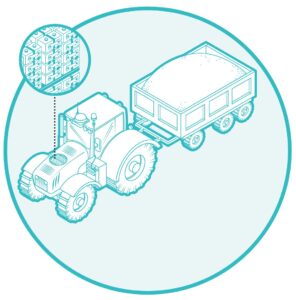The U.S. has quietly launched one of its biggest programs ever – connecting everyone to the internet, even in rural areas.
The program’s scope and economic benefits will match the impossible dreams of huge hydroelectric dams built in the 1930s, the interstate highway system in the 1950s and putting people on the moon in the 1960s.
It will be expensive. By one measure, the Federal Communications Commission (FCC) estimates a cost of $40 billion. A more ambitious plan would be an additional $40 billion.
“We’re on the cusp of some big changes,” says Brian O’Hara, senior director of regulatory issues, telecom and broadband for the National Rural Electric Cooperative Association.
O’Hara’s optimism starts with the steadily growing national awareness that bringing high-speed internet, or broadband, to rural areas will benefit the whole country.
The importance of broadband for all
Currently, more than 20 million Americans do not have broadband in their homes or businesses. Many live in rural areas and are left out because of simple accounting—the cost of wiring a fast internet connection miles outside a city is more than almost anyone could afford.
That arithmetic is not changing, but decades of internet growth is convincing businesses, politicians and other policy makers that broadband is essential for modern life and today’s economy.
A study by Purdue University found that every dollar invested in broadband would return nearly $4 to the U.S. economy. The benefits include more civic engagement and a higher Gross Domestic Product. It found that even at current levels of access, people save $1 billion a year by shopping online. The study also said broadband is more important than traditional infrastructure such as railroads and highways.
Broadband access for rural America brings new challenges. One includes knowing where the people are who don’t have internet—and exactly how many there are. The official count of those without broadband is complicated by oddities such as voluntary reporting, reporting by census blocks (meaning if one person has broadband in an area, it counts as everyone having it) and uncertainty over how fast the internet has to be in order to be considered high-speed.
Because of those uncertainties and unknowns, estimates of the number of Americans without broadband can range between 21 million and 160 million.
Then there’s the cost. The FCC’s $40 billion estimate envisions bringing broadband to 98 percent of the country and another $40 billion to reach the rest.
Rural broadband advocates agree the first step is to gain better information on who’s not served and where they live. A step in that direction came last March with enactment of the Broadband Deployment Accuracy and Technological Availability Act. That law aims to fix the flaws in how access is counted.
The pandemic shows the need for high-speed internet
Another reason for hope came last year as the FCC launched a 10-year program called the Rural Digital Opportunity Fund. Under that program, $16 billion has been allocated to internet providers, including some rural electric cooperative groups, to begin work expanding the reach of the internet. An additional $4.4 billion is planned for a Phase II.
While that’s far from the FCC’s $40-80 billion cost estimate, it doesn’t count funding from other agencies like the Rural Utilities Service or actions by individual states. The National Conference of State Legislatures reports that this year, 42 states addressed broadband in some form. Many states offer their own financial aid, as well as offices to coordinate broadband expansion.
O’Hara expects all progress will be strengthened by this year’s COVID-19 outbreak and the stay-at-home measures taken to control the spread of the virus.
“The pandemic has really driven this home,” says O’Hara. “Overnight, we went from broadband being, ‘Oh yes, this really makes life a lot easier,’ to ‘Oh my gosh, schools are shut down and teachers are trying to do online learning, and those of us that could work from home are no longer going into the office.’”
O’Hara sees the progress toward rural broadband as leading to successes like the moon landing and interstate highway system, as well as another important national initiative we undertook years ago—bringing electricity to rural America.
“We found a way to electrify the whole country,” says O’Hara. “Now it’s time to bring broadband to the whole country.”










